On 3rd July, the exhibition The Pulcinela Trails (Rotas de Polichinelo) opened to great pomp and circumstance at the Puppet Museum in Lisbon. This event however was more than a mere inauguration as when the doors of the chapel, where the items are displayed, opened, the cloister of the Convento das Bernardas was the stage of a joyful and effusive encounter of all the puppeteers that today represent Dom Robertos in Portugal (only João Costa was missing, one of the youngest puppeteers of the Roberto tradition, but to make up for this Marcelo Lafontana’s Mamulengo also joined the group). A true festival of Robertos that served as an introduction to the two Marathons that took place on Saturday 5th in Chiado and Sunday 6th in the Belém gardens (from 2:30 p.m. both days).
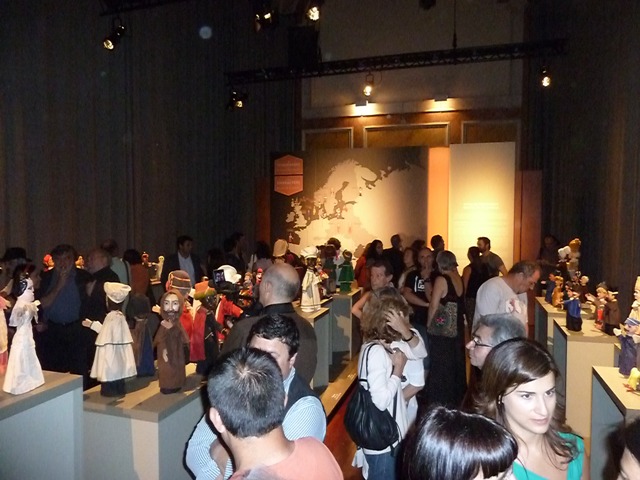
The exhibition’s first visitors.
I must say that this exhibition impressed all those who managed to fit into the chapel where the puppet shows are usually held. It was very exciting for all to see the impressive site of this small baroque church, embedded in the Convent, presided over by a huge map of Europe with a graphic description of the origin of each character and, in the space before it, the detailed presence of the different families of puppets in Pulcinela’s Europe.
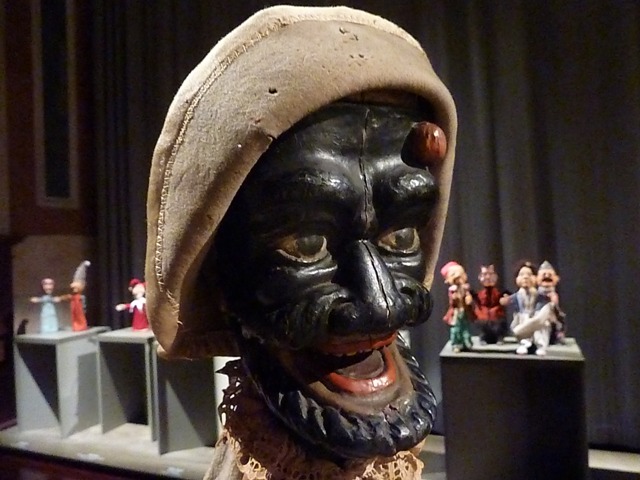
Harlequin.
Five hundred years of European history were represented here. It was not the official history, nor that of high culture but rather the popular history of simple peoples that accompanied the evolution of our continent through moments of freedom and rebellion. Immense underlining energy and potential that express the individual vitality and singularity that transformed Europe, first with the Renaissance and centuries later with the Enlightenment and the French Revolution.
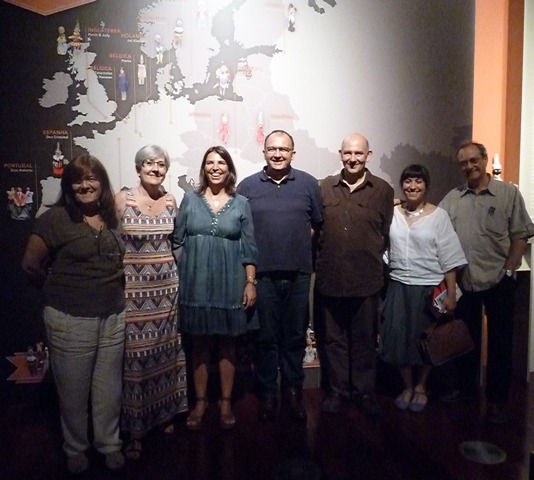
From left to right: Maria José Machado Santos, Idoya Otegui, Maria Carrelhas, Bruno Ghislandi, Enrique Lanz, Yanisbel Martínez and Toni Rumbau.
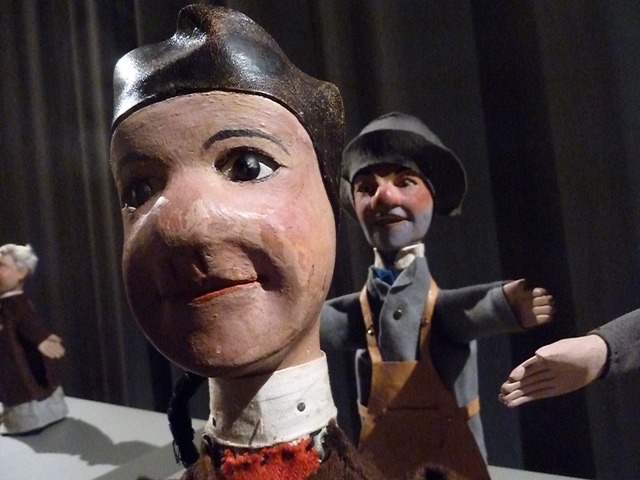
Guignol, with its alter ego Gnafron.
The opening was attended not only by the director of the Museum, Maria José Machado Santos, but also by the deputy director, Maria Carrelhas, accompanied by all the loyal collaborators of the Museum; such as Idoya Otegui, director of TOPIC inTolosa, where the same exhibition was shown in the Autumn of 2013; Bruno Ghislandi from Bérgamo, responsible for the presence of the magnificent Italian puppets in this exhibition; Enrique Lanz and Yanisbel Martínez from Etcétera, Granada, who filmed the opening and the Roberto puppet shows for their documentary“El Alma de los Pueblos”. Rute Ribeiro and Luís Vieira, directors of the Lisbon FIMFA and CAMa, centre of the Arts of the Puppet, also attended the event.
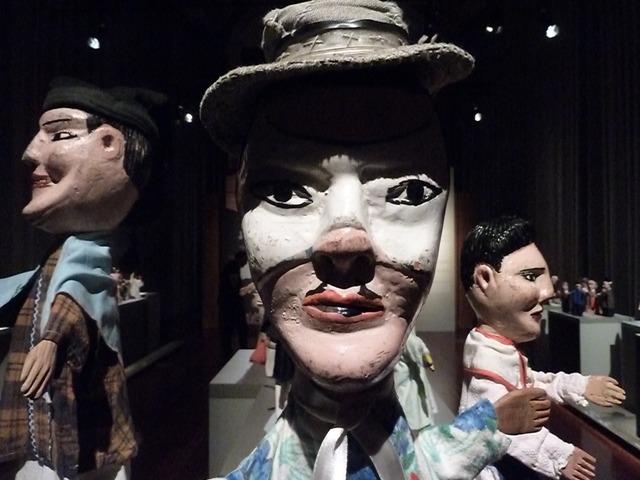
Robertos by Manuel Rosado.
Once the doors to the exhibition were opened we moved to the cloister of the Convent where eleven booths set up around this beautiful spot awaitedus. On one of the sides, there were tables with refreshments and sweet and savoury canapés for all to enjoy.
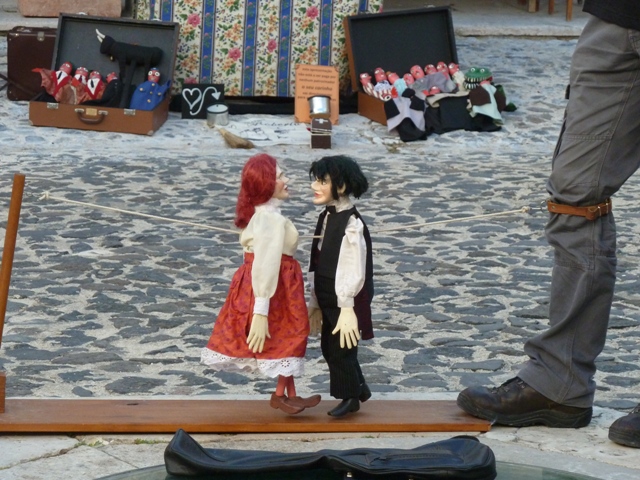
Puppets on a plank by Raul Constante Pereira.In the background are the Robertos by José Gil.
In the centre of the patio, Raul Constante Pereira, from Porto, started the party with his guitar and a most wonderful dance by two puppets on a plank. At the end, Marcelo Lafontana emerged with what is known as an ancient horn that he played with archaic beauty.
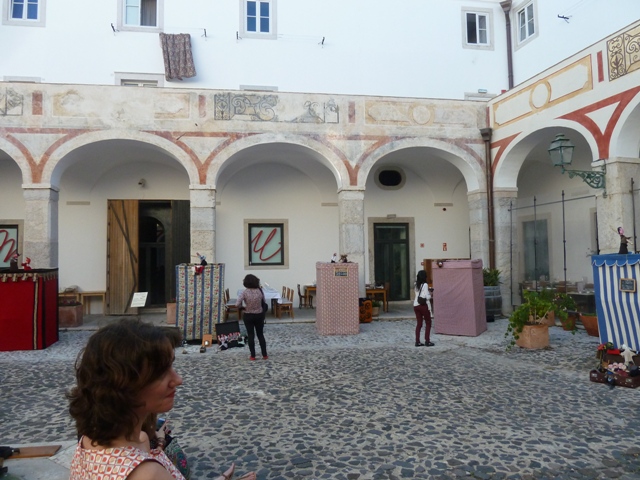
Roberto Booths in the Cloister of the Convento das Bernardas.
The response was immediate: a thousand demons struck up a screech: ten swazzles began to shout all at once and the ten puppeteers got ready to start their performances. They were ten magical and extraordinary minutes when each puppeteer gave life to their Robertos in their own style and at their own pace. And side by side were Raul Constante Pereira from Porto, the long-time puppeteer and researcher Francisco Mota from Porto, Jorge Soares from Faro, José Gil from Alcobaça, author of the book Dom Roberto Theatre, the young Sara Henriques also from Porto but who will soon move to Montemor-o-Novo, Nuno Correia Pinto from Albarraque, today residing in Cacém, Rui Sousa from Porto but nowadays a resident of Arcozelo, Manuel Costa Dias from Porto but now living in Évora, Sérgio Rolo from Lisbon but nowadays living in Macau, China and Vitor Santa-Bárbara from Lisbon but living in Foros de Amora.
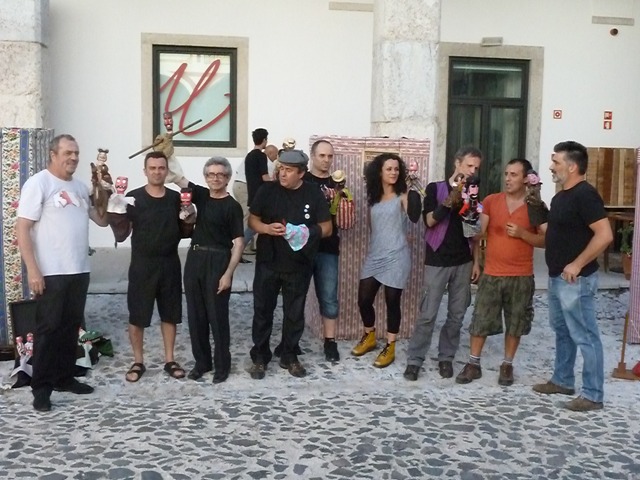
From left to right, the Roberto puppeteers: Manuel Costa Dias, Sérgio Rolo, Francisco Mota, José Gil, Marcelo Lafontana, Sara Henriques, Raul Constante Pereira, Vitor Santa-Bárbara and Jorge Soares. Missing from the photograph is Nuno Correia Pinto.
An extraordinary vitality inundated the cloister of the Convento das Bernardas, an energy of sounds, gestures and sights that gave life to the quiet puppets of the exhibition, as if the Portuguese Dom Roberto puppeteers had wanted to unite in an act of felicitous brotherhood with their European relatives, from the nearby Don Cristóbal Polichinela to the far of Petrushka, Mobarak or Karagöz. The Museum thus became a curious sounding board in which the most beautiful characteristics of the peoples of Europe, represented by these traditions of puppets, were united to acclaim their difference and their wish for conviviality and mutual acknowledgement.
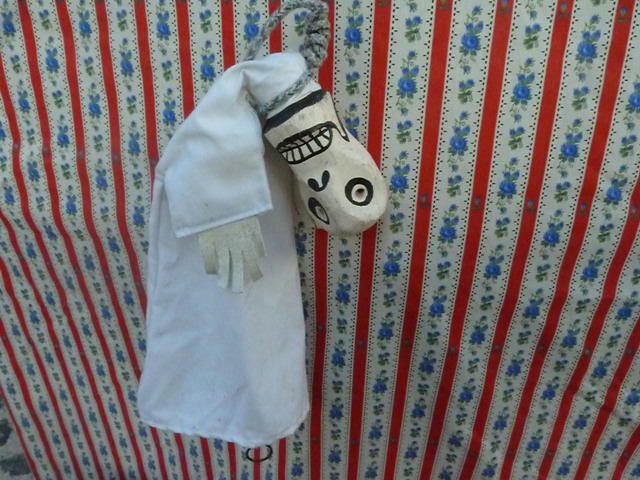
Death by hanging, Rui Sousa’s booth.
A European cry for freedom, for respect for singularities and a desire for understanding was the extraordinary moment of catharsis of puppeteers that we were fortunate enough to witness at this event.
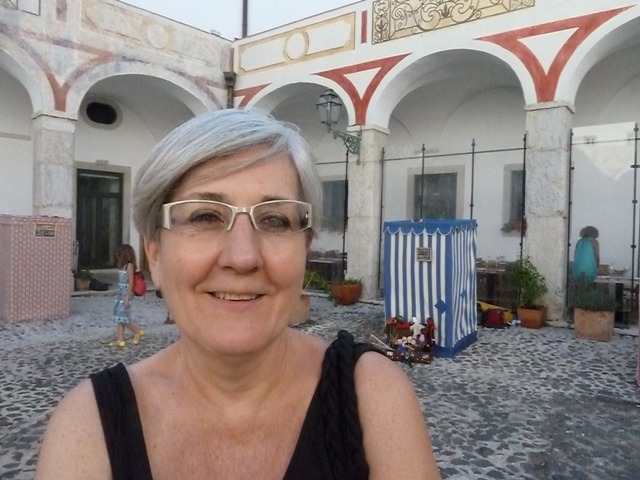
Idoya Otegui.
After the Robertos came Marcelo Lafontana’s mamulengos to delight us with their acts and their brazen cheekiness towards those people who made their way to the food and drink to quench their thirst and calm their spirit.It should be noted that this puppeteer – born in Brazil but of multiple identities, as he is Brazilian, Catalan, Portuguese and even a little Italian – enthralled the audience to such an extent that a lady went up to talk to the puppets as if she had known them all her life – as in fact was the case.
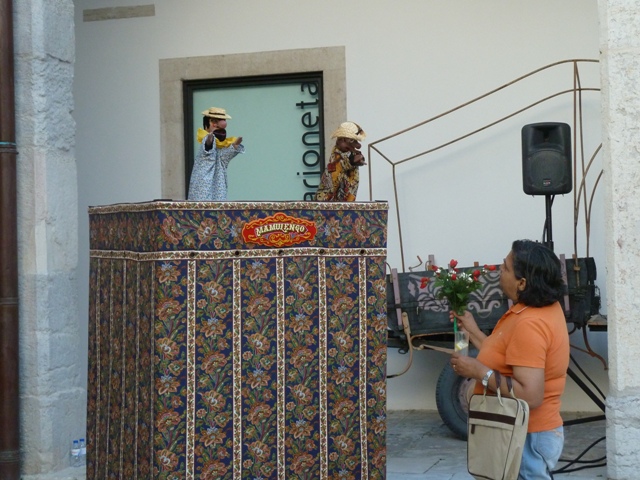
A lady talking to Marcelo Lafontana’s mamulengos.
The party carried on with its usual guests and other visitors talked away whilst the discreet Enrique Lanz, with film camera at the ready, filmed them to ensure there were souvenirs of this unforgettable encounter.
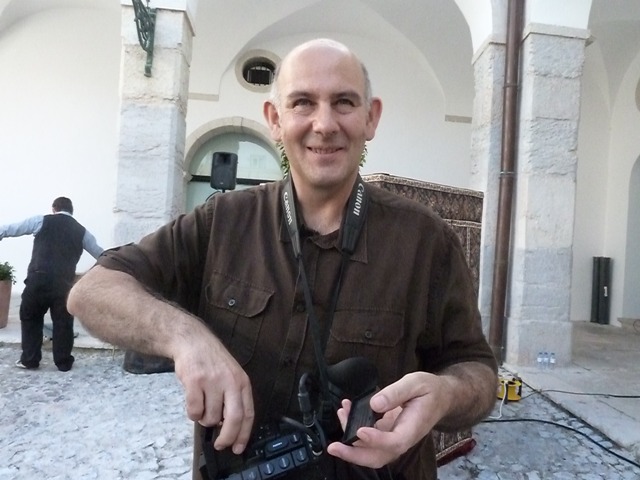
Enrique Lanz with his film camera.

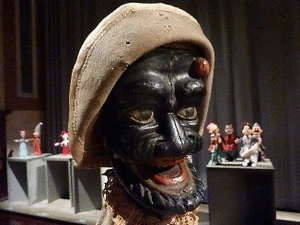
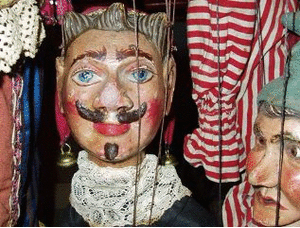
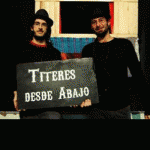
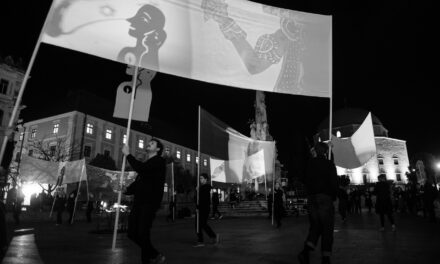
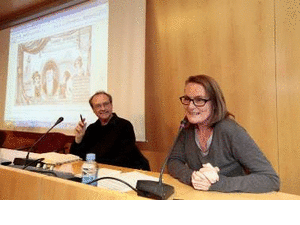


















Rebre información.
Gràcies
Millà